DJI Avata 2 review: Next-level FPV flying for beginners
Strap on your goggles and prepare for one of the most immersive experiences since Meta Quest

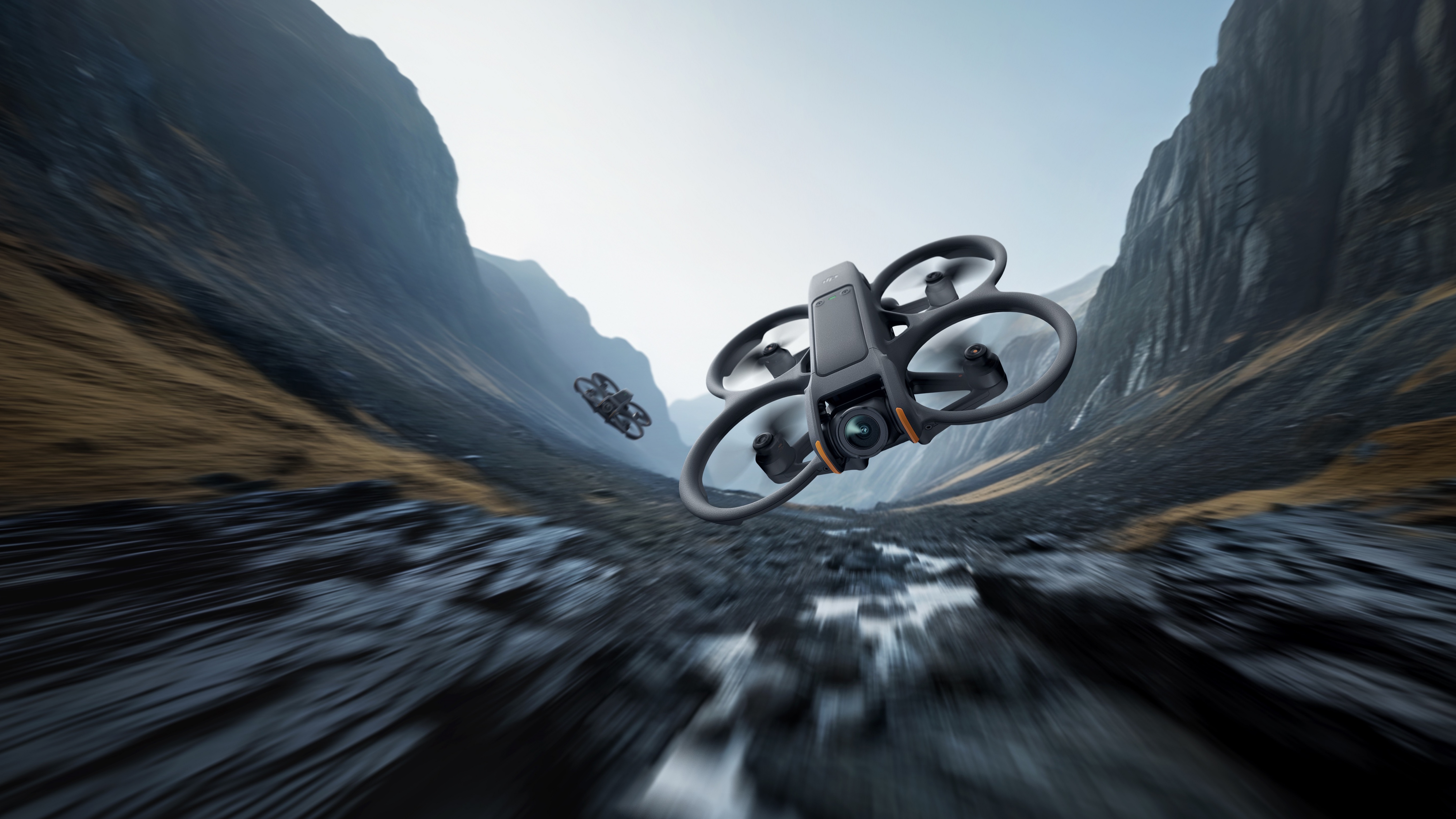

DJI’s new Avata 2 drone brings immersive FPV flying to the masses with intuitive control, amazing flight characteristics and the wherewithal to perform flips and drifts with the flick of a stick. This little box of tricks is on another level when it comes to producing speedy eye-popping bird’s-eye-view footage. An unreserved high five!
-
+
Amazing flight characteristics
-
+
Easy-to-use flight control
-
+
Immersive experience
-
+
Robust design
-
+
Front and rear obstacle-sensing
-
-
Manual mode is extremely difficult
-
-
Manual mode requires a different controller
Why you can trust T3

If you’ve always wanted to fly an FPV drone but have been scared off by the fact that the vast majority of FPV drones require a degree in physics, expertise with a soldering iron and the ability to understand a lot of technobabble, do yourself a big favour and make an immediate bee-line for DJI’s very latest FPV wonder-kid, the sensational, sky-dancing Avata 2.
FPV drones, such as the easy-to-use Avata 2 and a host of complex camera-equipped pro-spec models, produce sensational footage that is simply unattainable using a conventional drone like a DJI Mavic 3 Classic or DJI Mini 4 Pro, which is why there will always be space in our best drone guide for this type of flying tripod.
Where conventional drones are renowned for shooting s-l-o-w, cinematic landscapes and architectural subjects and therefore used extensively in the TV and film industry for setting up establishing shots, an FPV drone provides spectacular footage that swoops and banks as if seen through the eyes of a peregrine falcon chasing prey at breakneck speed down the side of a mountain.
It’s nothing short of breathtaking to watch. In fact, when flown wearing goggles—which is how all FPV drones are flown—it’s akin to wearing a Meta Quest 3 VR headset; only the footage you see is the real deal.
I don’t think I’ve ever been disappointed by a DJI product, whether it’s drones, action cameras, stabilising cameras, or field microphones. True to form, DJI’s clever clogs have pulled another doozy with the successor of the 5-star DJI Avata and given it a better camera, smoother controls using the included new Motion 3 controller, and even some aerobatic skills.
There’s a lot to unpack here, so let’s get on with it.
DJI Avata 2 review
Price and availability
The DJI Avata is available in three main packages. The Fly More Combo includes the drone, the Goggles 2, the Motion 3 controller, a single battery and a natty shoulder bag (£879). The Fly More Combo is much the same, only with three batteries (£1,049). There is also a drone-only option with one battery and no goggles or Motion 3 controller.
In the UK, you can buy the Avata 2 directly from DJI, Wex, Amazon and Jessops. If you’re a USA resident, try DJI (from $999) and Amazon ($1,199).
Setup
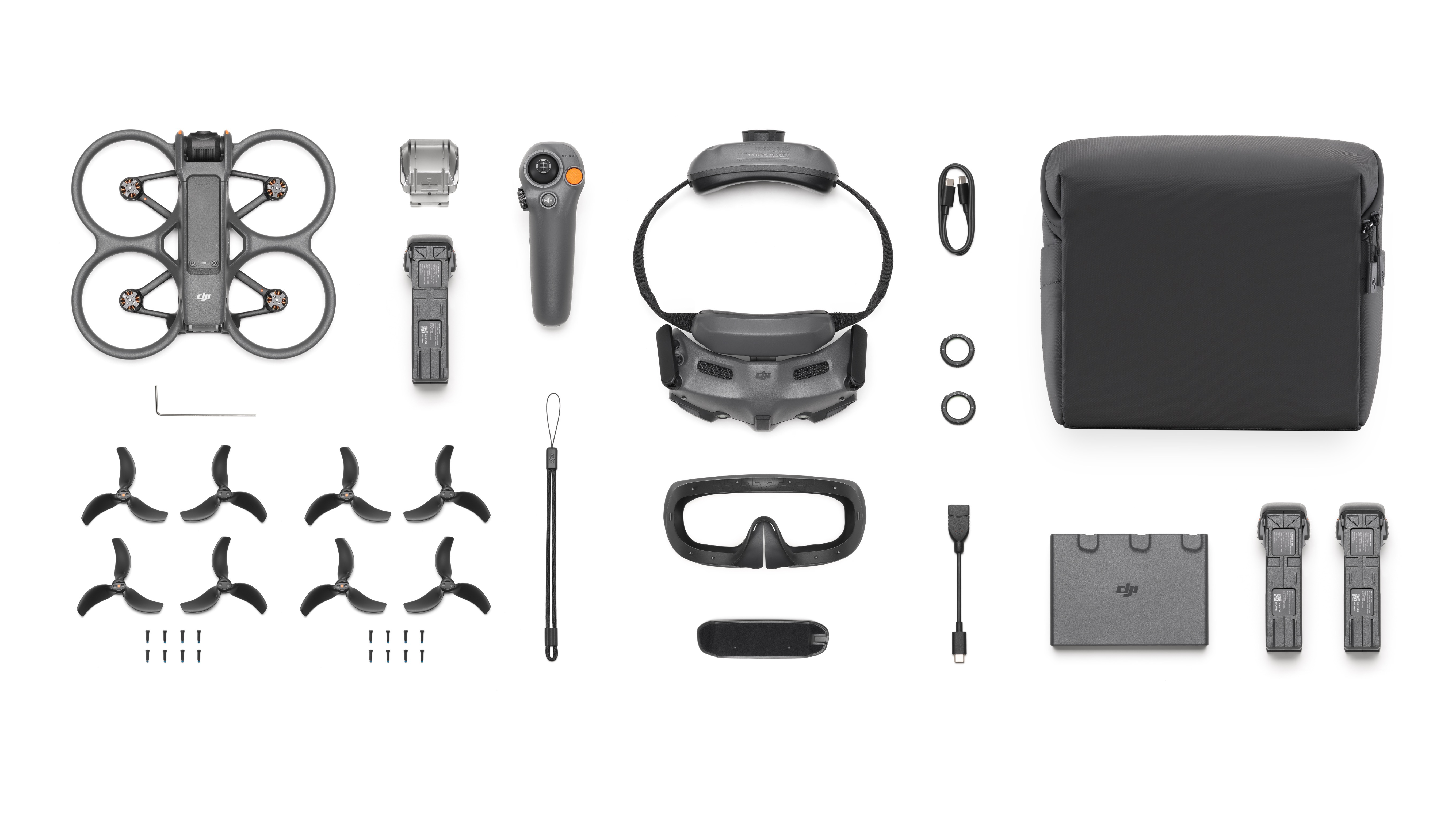
You get a lot more gear with the Fly More Combo
We received the DJI Avata 2 Fly More Combo, which comes with the drone, DJI’s Goggles 2, the amazing Motion 3 controller, three batteries, a multi-charger and a shoulder bag. At first, it looked like a complicated setup scenario having three different products on the table, but against all odds, it was actually very straightforward.
Just plug the goggles into your phone using the supplied USB converter (iPhone cable not included), launch the DJI Fly app making sure you have the latest version, turn everything on and follow the instructions, including downloading any inevitable firmware updates.
When initially setting it up, you will need to wear the goggles for the on-screen user guide, which goes through everything relating to both the goggles and the motion controller.
Once you’ve completed setting up and bound the drone to your DJI account, you won’t need the phone app anymore. However, it’s advisable to still have your phone and app on you when out in the field—just in case there’s an update and you need to use the app and the phone’s 4G network.
Design and features
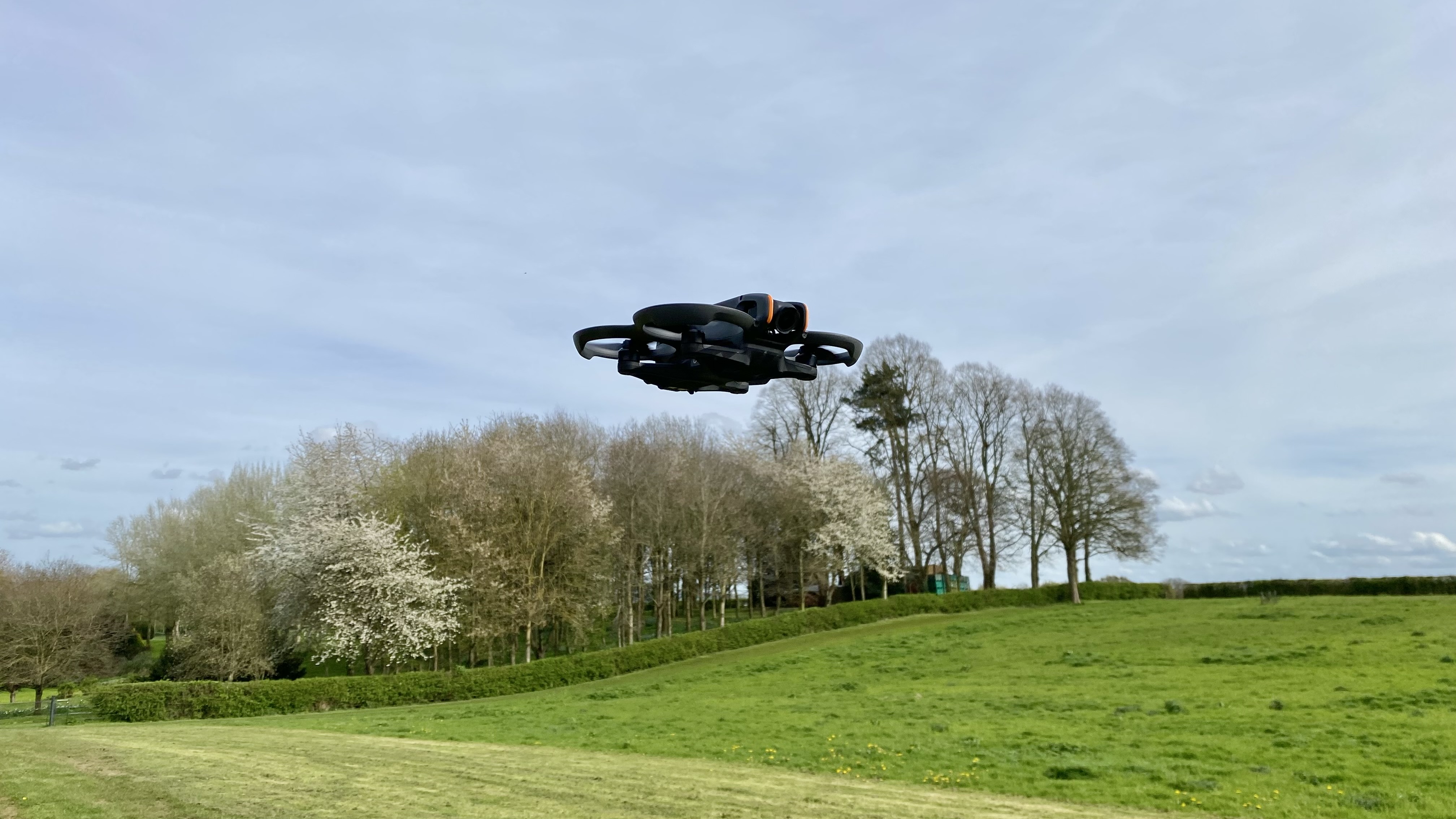
The DJI Avata 2 in its environment
The Avata 2 is visually indistinguishable from the original Avata. It still adopts the same enclosed four-prop system for crashworthiness and the same robust feel throughout. However, there are some key changes worth mentioning, including increased size—from 180x180×80mm to 185×212×64 mm—and a reduction in weight from 410g to 377g, which means it’s still some way off the CAA’s magic sub-250g regulation.
(You can read more about UK drone regulations here.)
Although the new variant has the same top speed as the earlier model – 18mph in Normal mode, 36mph in Sport mode and a phenomenal 60mph in tricky Manual mode – some parameters have been tweaked to vastly improve the Avata 2’s handling. It’s quite a bit quieter, too.
The Avata 2’s obstacle sensing system has also been given a major overhaul so instead of just downward binocular sensing, the new model has both downward and backward visual positioning. Flight time, too, has been increased from around 18 minutes to approximately 23 minutes, while maximum flight distance is now a considerable 8 miles (13km).
However, you should bear in mind that flying beyond the line of sight is against the law. To abide by the current drone code, all FPV flyers are meant to have a spotter with them—someone who can keep an eye on the drone while the pilot is wearing goggles.
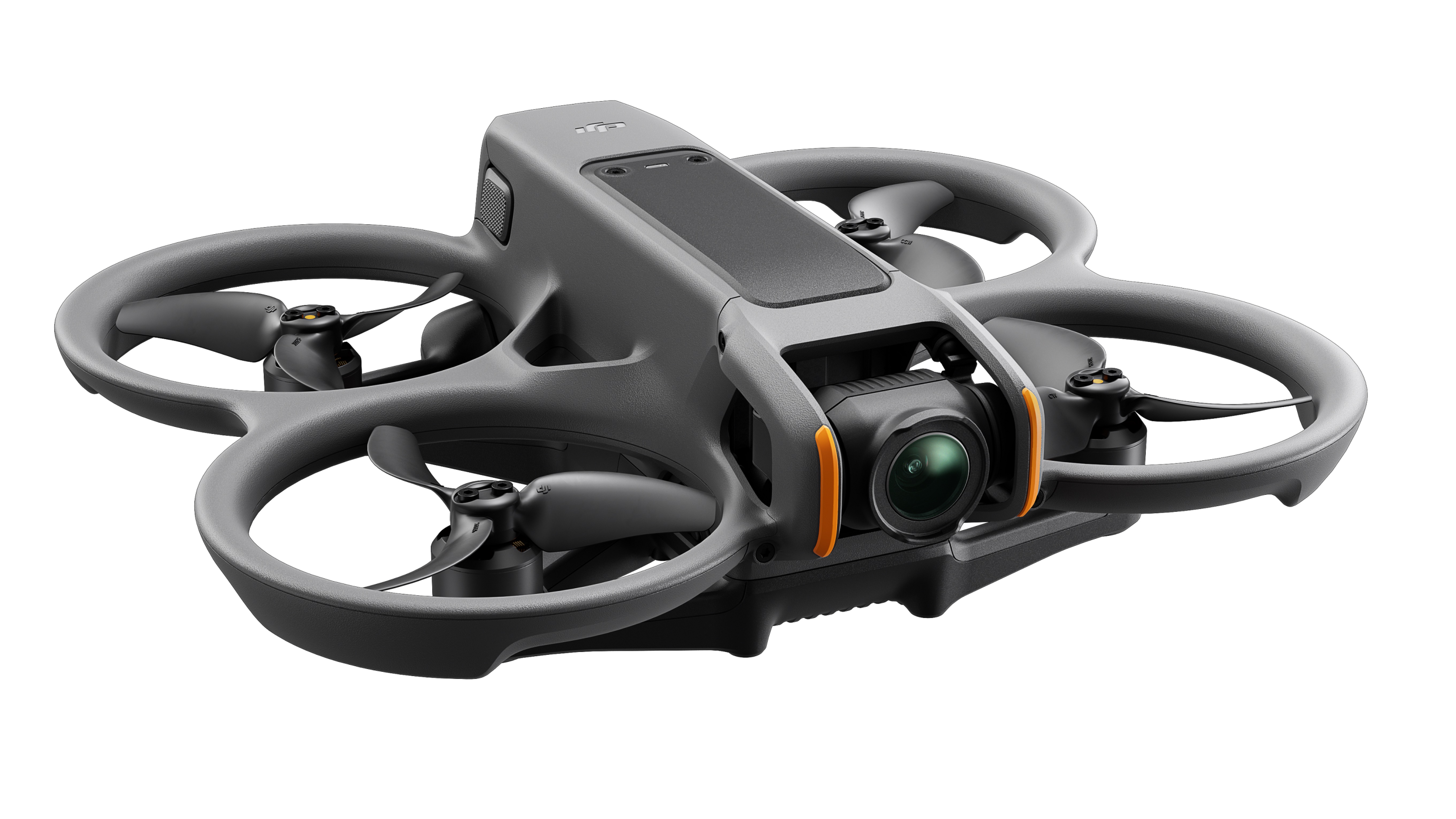
The all-important nose-mounted camera and first-rate mechanical three-axis gimbal are protected to some degree by the drone’s tough plastic side-mounted protrusions. The camera has an upgraded 1/1.3-inch image sensor that produces 12 MP stills and video resolution up to 4K (16∶9) in frame-rate increments of 30, 50, and 60fps.
This camera is a brilliant improvement, in my opinion, and you’ll really appreciate its razor-sharp results when you download the footage from the drone’s onboard 46GB storage or optional Micro-SD card.
DJI Goggles 2
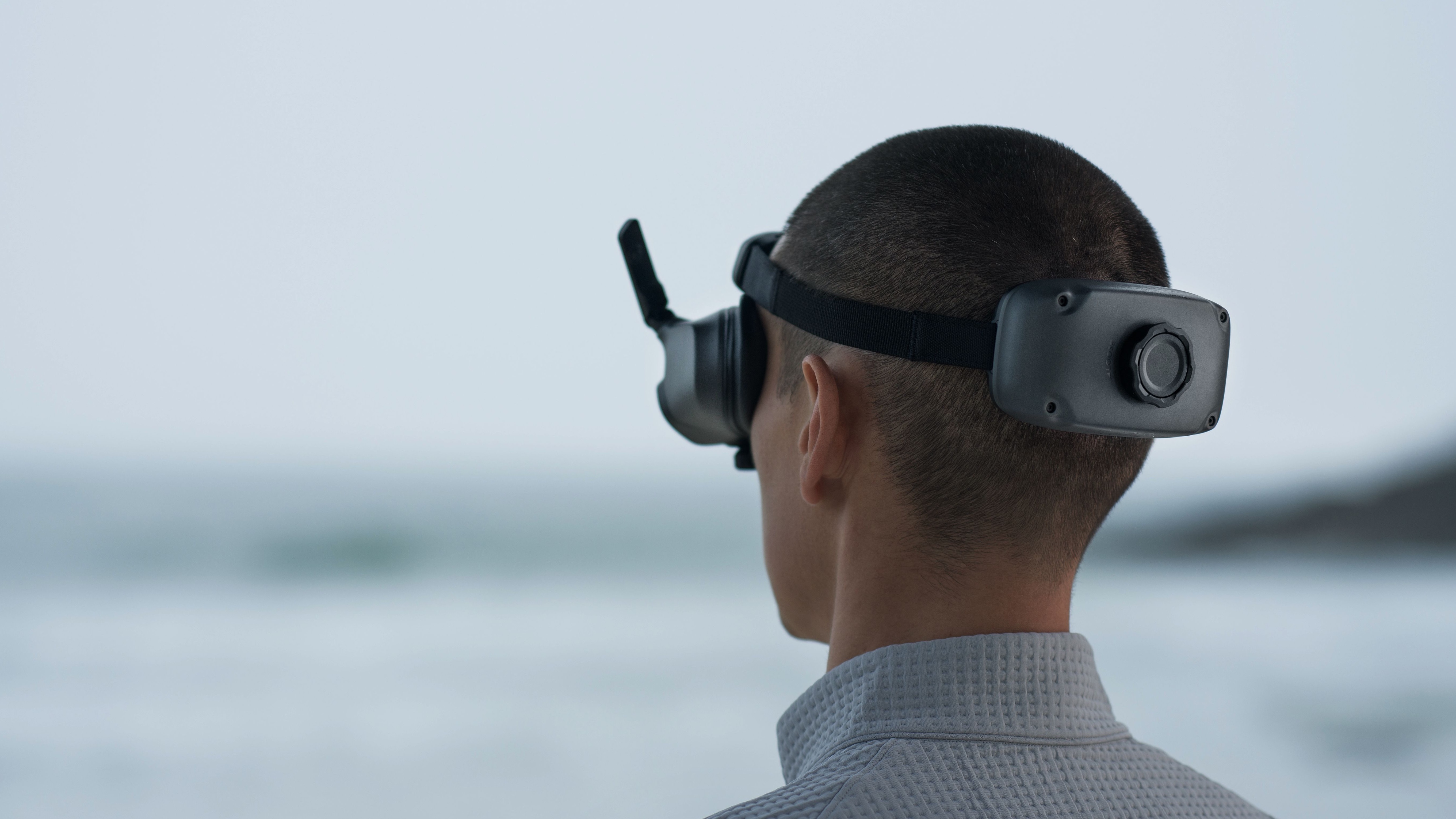
Wowsers, now this is what I call a pair of goggles. The DJI Goggles 2 has a supremely comfortable fit with no pressing down around the nasal area – much more comfortable than Meta Quest’s VR goggles. And at 470g, they feel remarkably light, too.
Like any decent VR goggles, you can adjust the eye optics’ refraction externally using a pair of small knobs and adapt the fit of the head trap using the rear-mounted ratchet dial. The goggles also feature an internal defogging system.
Image resolution is a fantastic 1920×1080 which makes flying the Avata 2 a truly immersive experience that you have to see to believe. DJI’s rocksteady OccuSync 4, meanwhile, ensures that video transmission is unflinchingly reliable throughout the flight with almost zero glitching, even when the Avata 2 is flown behind trees and small buildings.
These new goggles come with some tantalising smarts, too, including Real View, which switches to a pass-through camera mounted on the goggles so you can see everything around you almost as if you’re wearing no goggles at all. This is a superb feature for a) seeing the drone in the sky, b) establishing your orientation on the ground and c) viewing anyone who interrupts your fun.
To activate, simply double-tap the side of the goggles or the left switch on the motion controller. You can also set it to picture-in-picture mode, which splits the screen between live view and what the drone camera is pointing at. Clever. The goggles have an operating time of around three hours on a full charge.
As with the earlier Avata, this drone has a Head-Tracking mode. Basically, the orientation of the drone and camera changes depending on which direction you’re looking in. However, I found this viewpoint incredibly confusing and quite nauseating. Nevertheless, I recommend giving head–tracking a try—as long as you’re in a wide open space.
DJI Motion 3 Controller
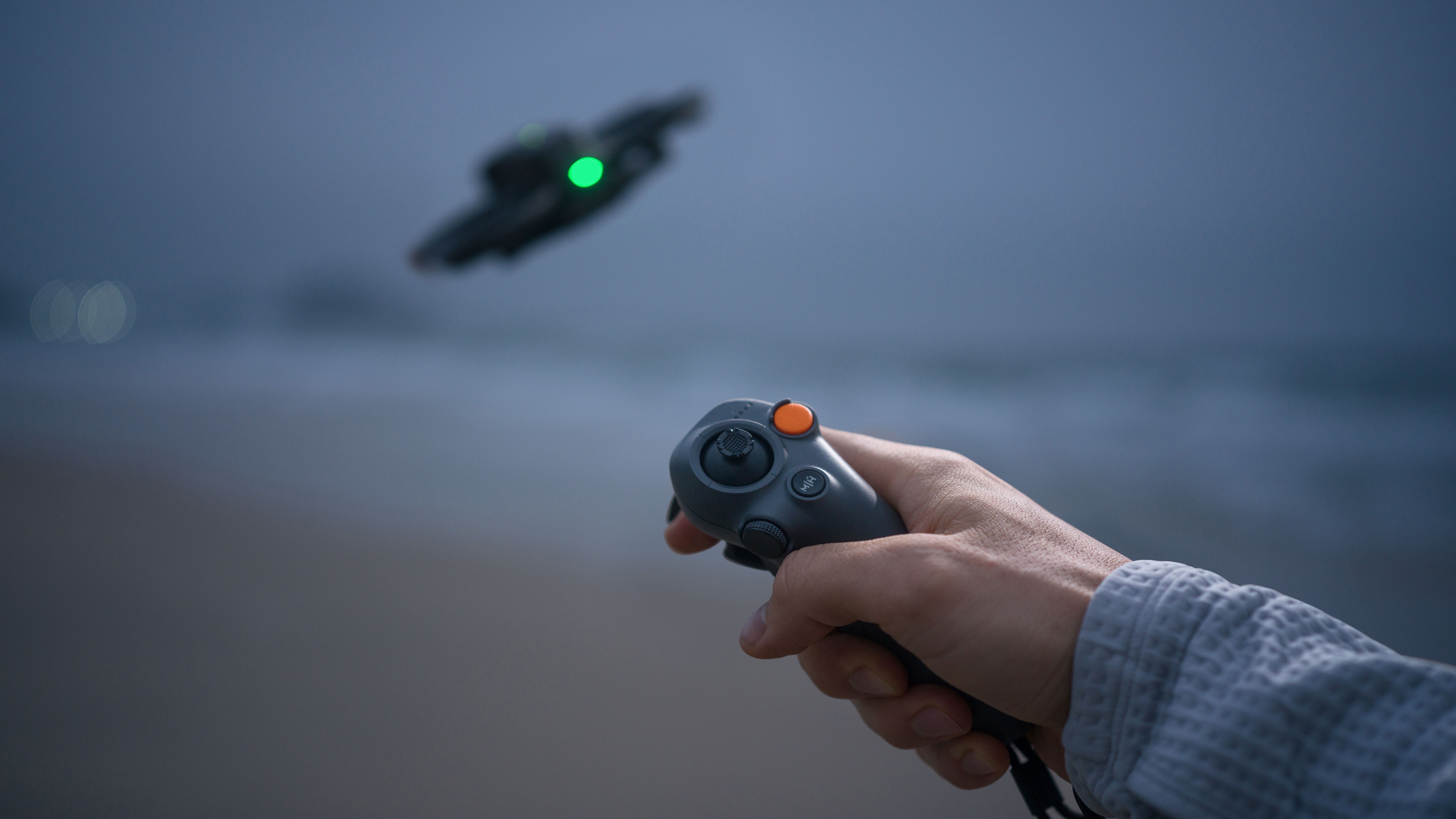
DJI’s ultra-compact Motion 3 controller makes the Avata 2 so intuitive to fly. It comprises a forwards and backwards acceleration/braking trigger for the index finger, a bright orange Lock button, a tappable function dial for settings, a shutter/record button and a flight switch for Sport mode. The default flying mode is set to beginner mode, so change it in settings if required.
To use the Motion 3, simply double tap the orange Lock button and the props start up. Then, hold the Lock button to take off, and the drone will hover at about 1.5 metres. If your finger isn’t pulling on the trigger and you move your hand around, the view in the goggles will only tilt up and down.
However, if you pull the trigger until you feel resistance – rather like a camera’s shutter button – and then move your hand around, the drone, as well as the view in the goggles, will follow your hand movements in all directions. Once in flight, it’s simply a case of pulling the trigger for acceleration and tilting your hand to the left and right to turn up and down for minor altitude changes and, for extra altitude, occasional use of the included mini four-way joystick.
The really, really clever part of this motion-controlling system is the small circular reticle that appears on the goggles’ screen. Just point the reticle in the direction you want the drone to go, and it will follow that trajectory. This makes it incredibly easy to fly the Avata 2 through the tightest of spaces without crashing.
In fact, it’s the most intuitive and confidence-inspiring method of drone control I’ve ever used. Sure, the original DJI Avata could also be flown with a Motion controller, but this version is on another level of controllability. I honestly believe anyone would get a full handle on this control method within about 5 minutes – and with little explanation. It’s that amazing.
However, the Motion controller does have some restrictions, and the predominant one is the inability to fly the Avata 2 in manual mode. In manual mode, the drone behaves in a completely different manner, and the only way to enjoy the drone’s stops-out manual flight characteristics is to invest in DJI’s optional FPV Remote Controller 2.
But before you take to the skies using the manual method, you must complete a good stint of practice using DJI’s app-bound FPV simulator. Flying in manual mode is a whole new ball game with a hugely steep learning curve and controls so alien they’ll make your head hurt. Moreover, you are advised to perform your first manual flight in a wide open space. And pack a spare pair of underpants, too, because the drone reaches speeds of up to 60mph in this mode.
Easy Acro
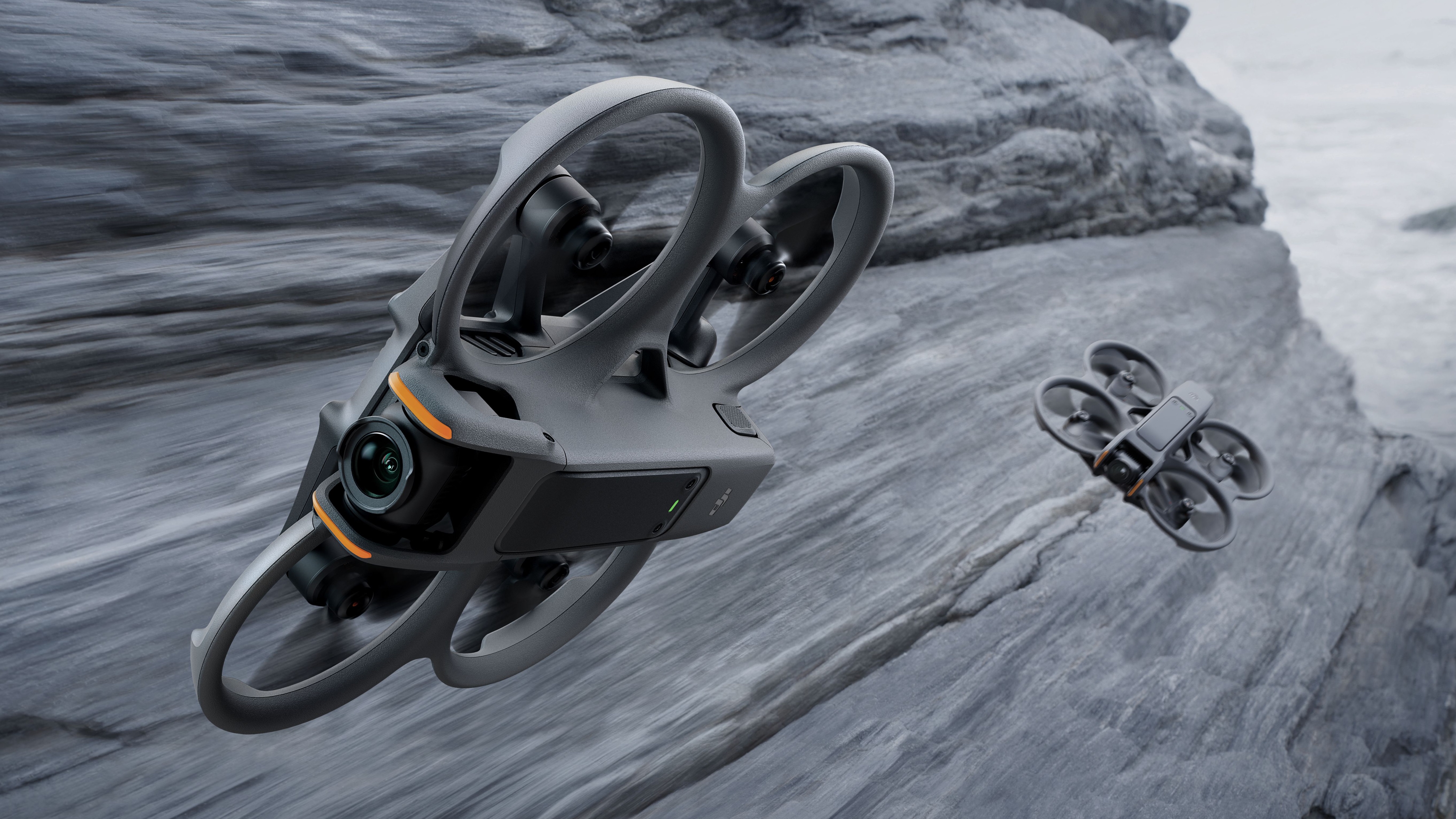
This is the first DJI FPV drone to include a set of pre-programmed aerobatic tricks using the Motion 3 controller. If you select Flip mode, the drone will perform a left roll, right roll, back flip or front flip, depending on which way you move the thumb stick. This is good fun to do, but it’s a bit gimmicky, in my opinion.
What I did love was the Drift mode which is truly gobsmacking. In this mode, the drone can be made to fly towards a subject, turn around it or over it in a split second and continue in reverse to produce a very cinematic wrap-around shot. If you love pulling off the kind of aerial tricks that only a pro-spec FPV can do, then Easy Accro is the mode for you.
Performance
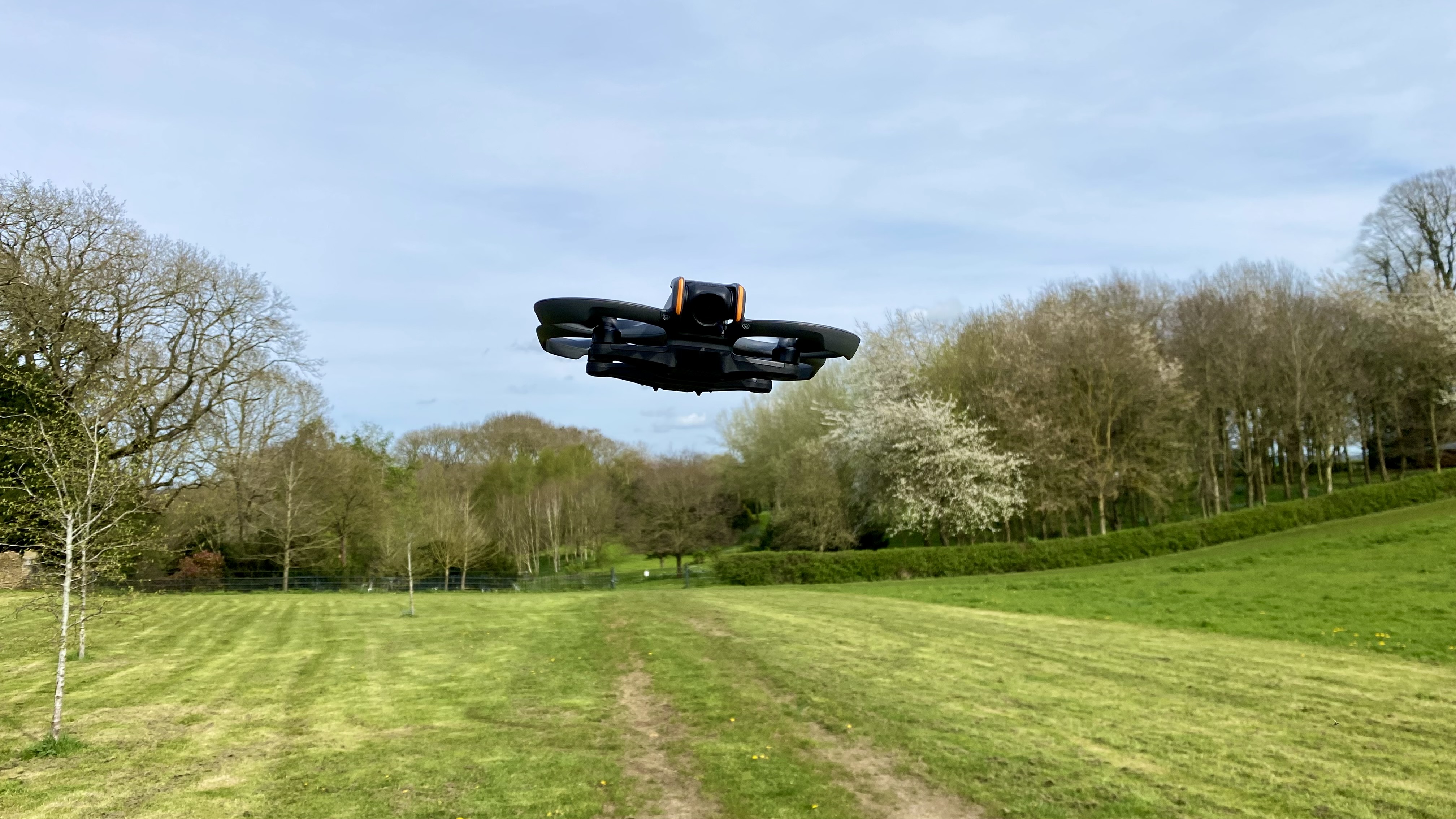
It was pretty windy on my test day, and the drone felt like it might drift off course, but thankfully, its rock-solid GPS held it in position. I would advise wearing the goggles at all times during your first flight because if you take them off and fly the drone, its behaviour will seem erratic, and the controls will seem quite alien.
However, I guarantee that after just 10 minutes of flying this thing, you’ll be looking for tree branches to fly between, creating amazing video footage in the process. Impressively, this drone is so robust that you could clout a tree branch, and as long as it isn’t stuck, it’ll self-right itself and carry on flying. There’s also a Turtle mode buried within the settings that basically flips the drone over if it is upside down in an inaccessible place.
Another thing that impressed me was the Avata 2’s ability to fly at speed really close to the ground without crashing. As long as the ground is level, it’s impossible to force the drone into ground no matter how far downwards you push the Motion 3 controller.
In brief, the new DJI Avata 2 boasts incredible flight performance skills that will genuinely blow you away. It turns like a dragonfly, is incredibly easy to control, and is tiny enough to squeeze through the smallest gaps—as long as you hold your nerve.
Verdict
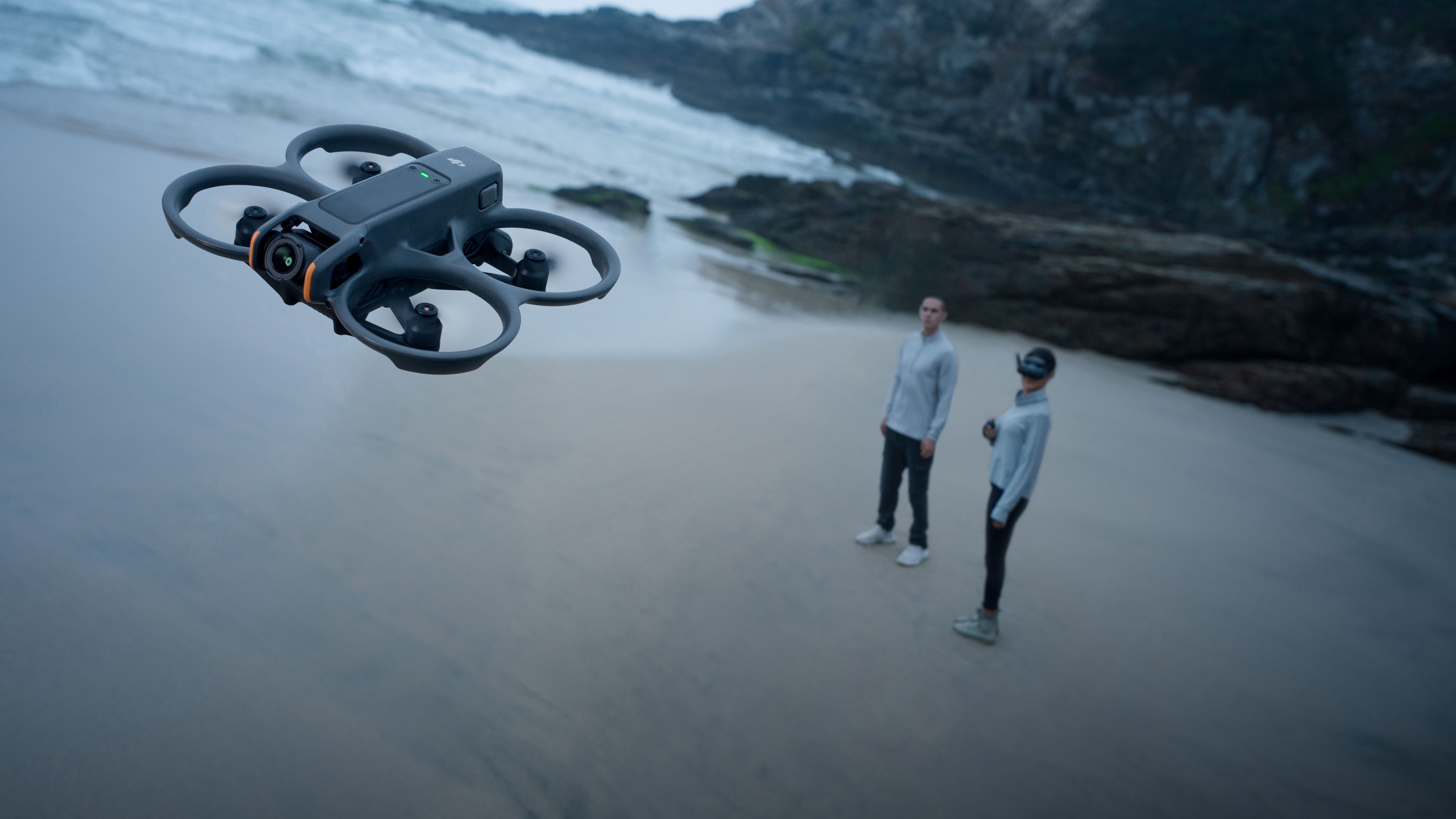
In the pantheon of FPV drones, the DJI Avata 2 is a rollicking, wondrous, adrenalin-surging experience that fulfils all expectations and more. Should you eschew a DJI Mavic or Mini 4 Pro in favour of an Avata 2? That’s a good question.
Put another way, both types of drone are brilliant when used for their specific functions, and it’s true to say that, in a perfect world, the ideal setup would be ownership of both a DJI Mavic 3 Pro and a DJI Avata 2 to cover a wide variety of ‘money shots’. But life’s not like that.
If you want to create day-to-day footage and high-res still images of lovely landscape scenes, shots of you and the family enjoying a beach holiday or want to check the roof on your house, a standard drone like the Mavic or Mini is far and away your best bet.
But if you fancy the thrills – and occasional spills – of fast first-person-view flying without the complications of going down the usual FPV route, then the Avata 2 is unquestionably the easiest-to-use model on the market. And it’s not too expensive to buy, either.
Sign up to the T3 newsletter for smarter living straight to your inbox
Get all the latest news, reviews, deals and buying guides on gorgeous tech, home and active products from the T3 experts
Derek (aka Delbert, Delvis, Delphinium, Delboy etc) specialises in home and outdoor wares, from coffee machines, white appliances and vacs to drones, garden gear and BBQs. He has been writing for more years than anyone can remember, starting at the legendary Time Out magazine – the original, London version – on a typewriter! He now writes for T3 between playing drums with his bandmates in Red Box (redboxmusic).
-
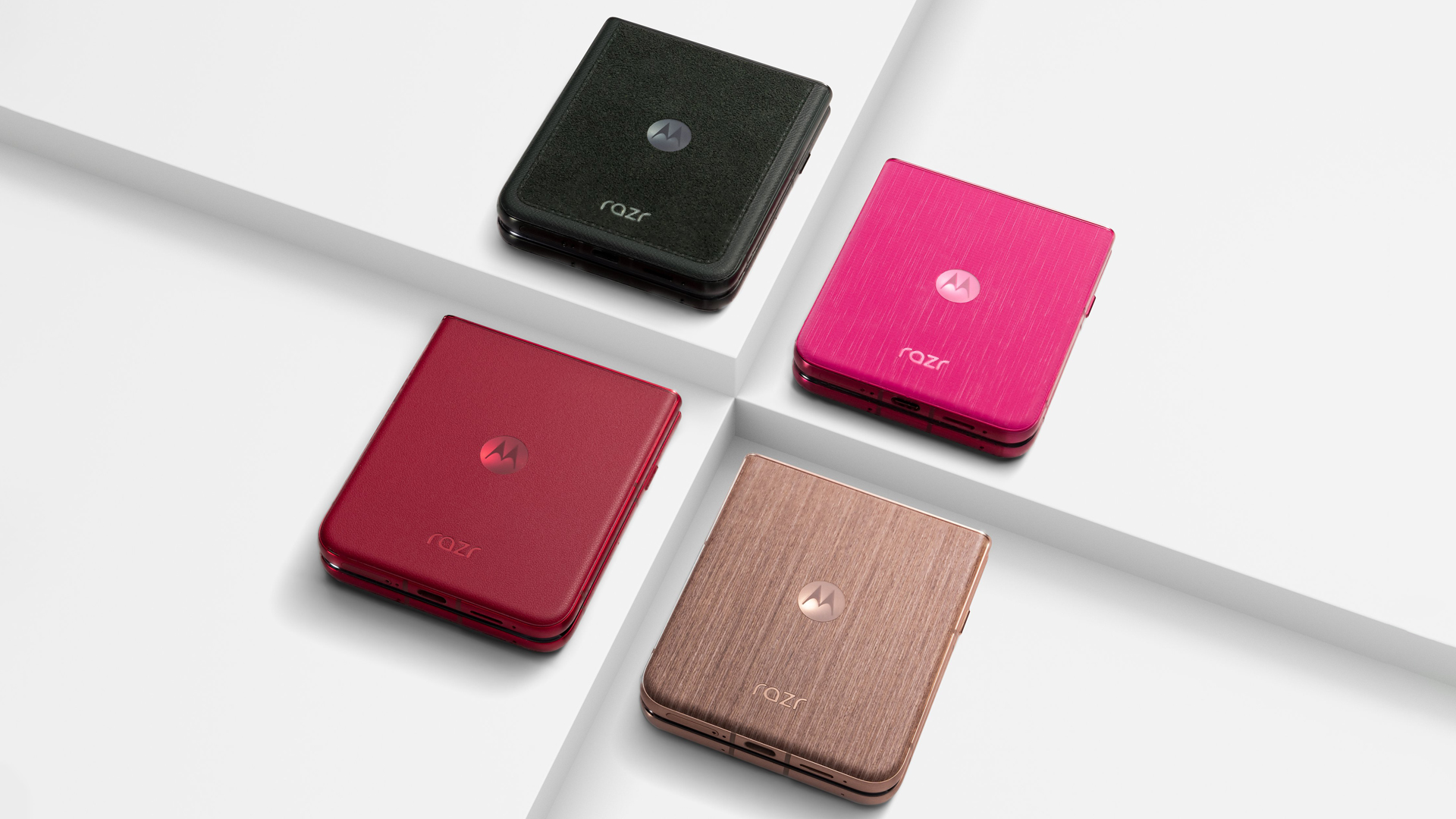 Iconic foldable phone to get an update later this month
Iconic foldable phone to get an update later this monthMotorola is promising to revitalise its flip phone later in April
By Chris Hall Published
-
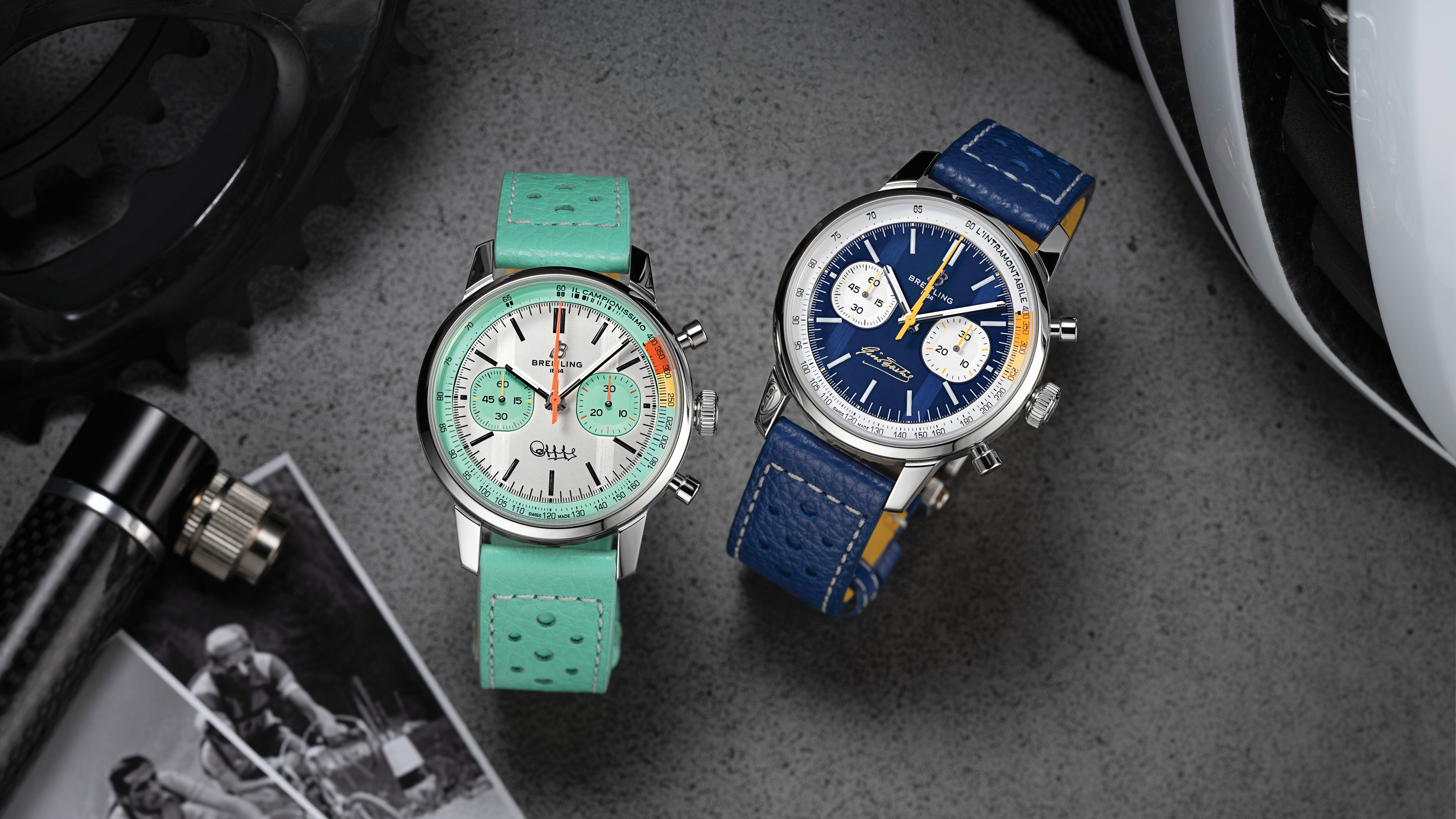 Breitling adds two new Top Time chronographs celebrates the legacy of cycling legends
Breitling adds two new Top Time chronographs celebrates the legacy of cycling legendsThese are gorgeous watches
By Sam Cross Published
-
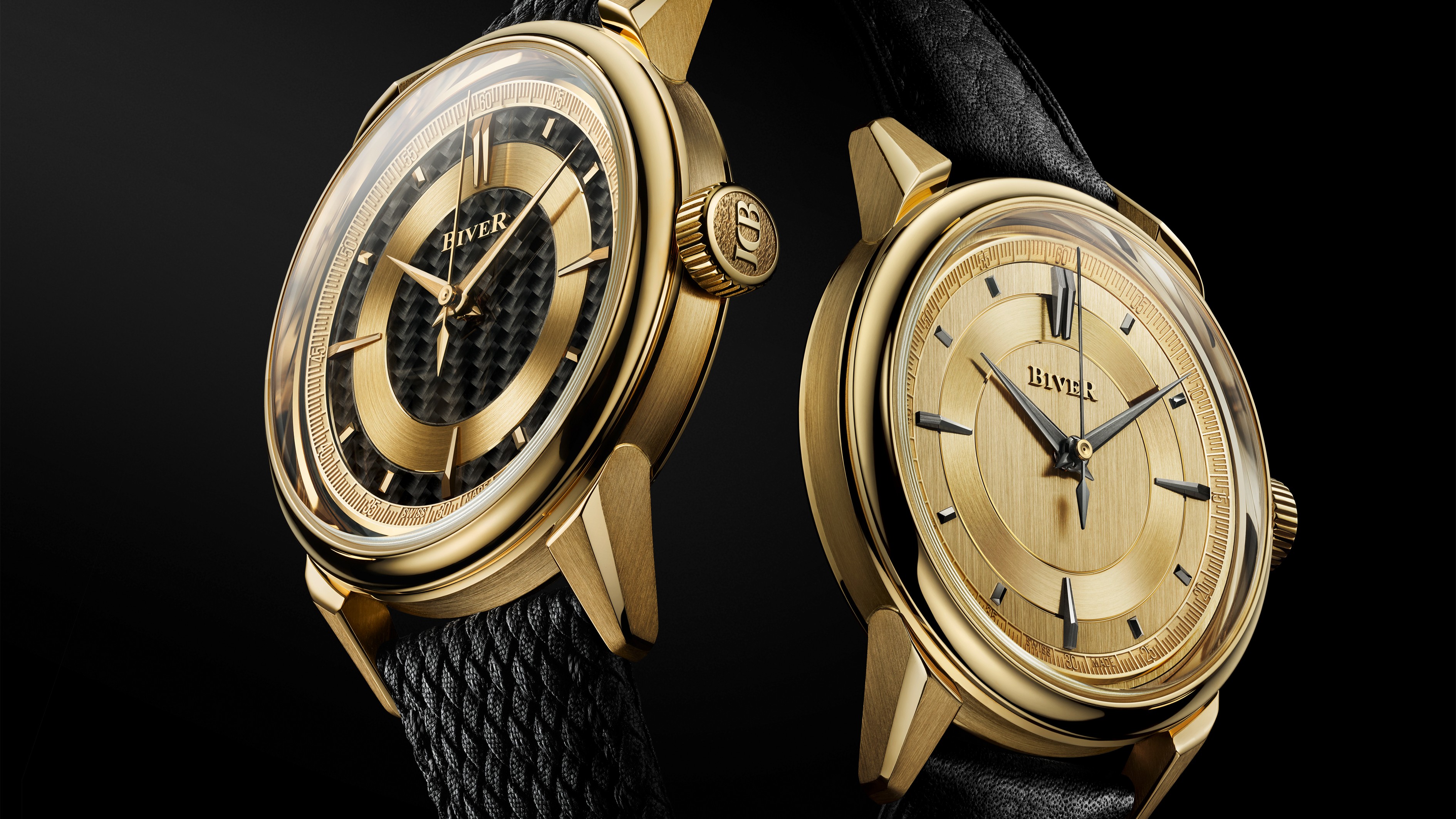 Biver adds another two Automatique models to its collection
Biver adds another two Automatique models to its collectionThese are classy additions
By Sam Cross Published